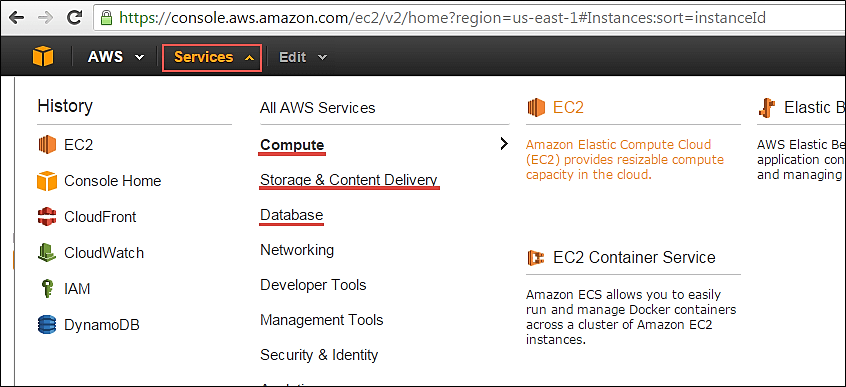RHEL7 Extras
| RHEL7 Extras | ||
| Introduction of Docker | Docker is an open source project that automates the deployment of applications inside Linux Containers, and provides the capability to package an application with its run time dependencies into a container. | |
| Device Hot-plug Removed | While RHEL 5/6 has device hot-plug support (udev rule that runs the ifup script for newly created devices), it has been disabled for RHEL 7 since it can result in race conditions when initializing newly found. | |
| No 32 Bit ISO Image | No 32 bit ISO for download. Red Hat Enterprise Linux 7 will only provide 64-bit ISO's, thus allowing only a 64-bit operating environment. RHEL 7 will not natively support 32-bit hardware. | |
| "MemAvailable" Added to /proc/meminfo | A new entry to the /proc/meminfo file has been introduced to provide the MemAvailable field. MemAvailable provides an estimate of how much memory is available for starting new applications, without swapping. However, unlike the data provided by the Cache or Free fields, MemAvailable takes into account page cache and also that not all reclaimable memory slabs will be reclaimable due to items being in use. | |
| New Ruby and Python Versions | Red Hat Enterprise Linux 7 provides the latest Ruby version, 2.0.0 and Python 2.7.5. | |
| OpenJDK7 Made Default | Red Hat Enterprise Linux 7 features OpenJDK7 as the default Java Development Kit (JDK) and Java 7 as the default Java version. | |
| More Powerful NetworkManager | NetworkManager has been significantly enhanced to configure and monitor all the networking features for enterprise class servers and for desktop applications. For the enterprise data centers, NetworkManager can be used for tasks such as basic networking configuration, network teaming, configuring virtual LANs, bridges, bonds, IPv6, VPNs, assigning interfaces to firewall zones, and others. For desktop servers it can manage wired and wireless networks and VPNs. | |
| Support for 40 Gigabit NICs | Red Hat Enterprise Linux 7 supports 40 Gigabit network interface controllers (NICs) from multiple hardware partners. This provides support for 40 Gigabit Ethernet link speeds enabling faster network communication for applications and systems. Note that the ethtool utility will report interface link speeds up to 40Gb data rates. | |
| No RHN Classic | RHN Classic is not supported in RHEL7. Older versions supported different subscription management methods. Red Hat Subscription Management is the only one used by RHEL 7. | |
| OpenSSH - Multiple Required Authentications | Red Hat Enterprise Linux 7 supports multiple required authentications in SSH protocol version 2 using the AuthenticationMethods option. This option lists one or more comma-separated lists of authentication method names. Successful completion of all the methods in any list is required for authentication to complete. | |
| Minimum Disk Space for Installation of RHEL7 | Red Hat Enterprise Linux 7 now requires at least 1 GB of disk space to install. However, Red Hat recommends a minimum of 5 GB of disk space for all supported architectures. | |
| Implementation of tmpfs file system | Red Hat Enterprise Linux 7 offers the ability to use /tmp as a mount point for a temporary file storage system (tmpfs). When enabled, this temporary storage appears as a mounted file system, but stores its content in volatile memory instead of on a persistent storage device. No files in /tmp are stored on the hard drive except when memory is low, in which case swap space is used. This means that the contents of /tmp are not persisted across a reboot. | |
| In-place upgrade, now supported | Now, in-place upgrade from RHEL 6 is supported to RHEL 7 (Reference: https://access.redhat.com/solutions/637583). | |
| Dracut used by Anaconda | Anaconda would use "Dracut" to configure disks during installation (GUI) in RHEL 7.x which was earlier performed by utility called "disk druid". | |
| New Logging Framework | Red Hat Enterprise Linux 7 introduces a new logging daemon, journald, as part of the move to systemd. journald captures the following types of message for all services: - syslog messages - kernel messages - initial RAM disk and early boot messages - messages sent to standard output and standard error output. | |
| Samba 4 fully supported | RHEL 7 provides Samba 4, bundle of utilities, features, python bindings which allows communications using SMB1, SMB2 & SMB3 protocols. In RHEL 6.4 and later versions, Samba 4 was provided as Technology Preview. | |
| Non-root user process limitations | In RHEL 6.x, non-root users were resitricted to a total of 1024 processes per PAM session. In RHEL 7.x, this has been increased to 4096 processes per PAM session by default. | |
| PCS replaces luci | The high availability management agent "luci" has been replaced by "pcs" in RHEL 7. Now, "pcs" can controls pacemaker-based clusters only, not rgmanager-based cluster setups. | |
| Default IO Scheduler | "deadline" is now the default IO scheduler in RHEL 7.x (except SATA drives) which was earlier "cfq" by default. | |
| Changes to mount options | Unlike ext3 and ext4, the XFS file system enables the user_xattr and acl mount options by default. Ext3 and ext4 file systems do not enable these attributes by default. | |
A few advanced differences:
Another Interesting blog on RHEL 7: http://www.certdepot.net/rhel7-quick-recipes/
| ||

